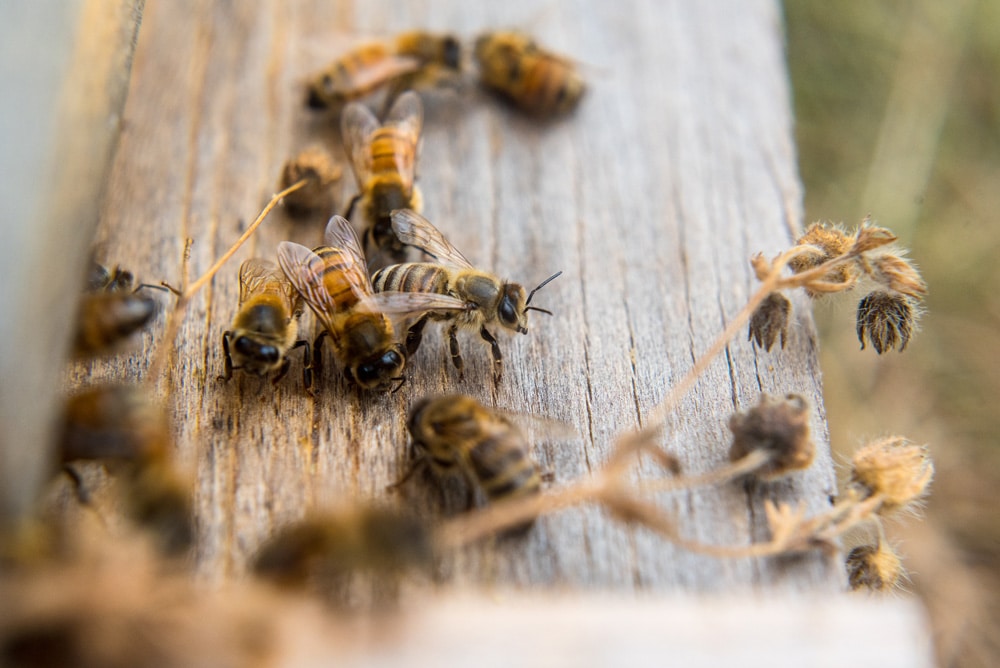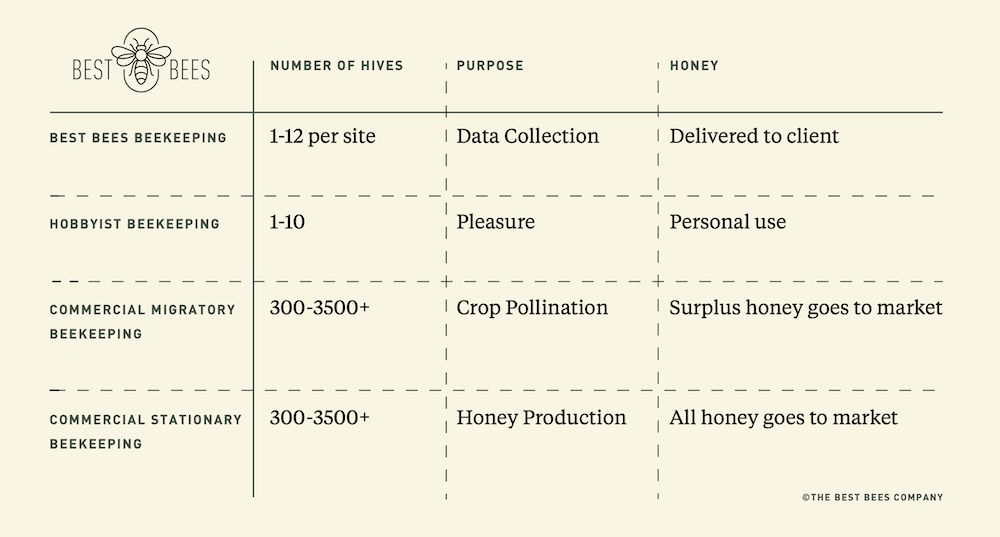Contents:
- Cultivate Your Autumn Garden to Make It An Oasis for Pollinators
- Tip #1: Choose Long-Blooming Plants with a Range of Bloom Times
- Tip #2: Get the Most Bang for Your Buck
- Tip #3: Cool It With the Chemicals
- Tip #4: Don’t Weed Your Garden
- Tip #5: Mulch in Moderation
- Tip #6: Discover the Joys of Milkweed
- Tip #7: Plant Pollinator-Friendly Plants for Spring and Summer Now
- Other Ways to Help Bees
Cultivate Your Autumn Garden to Make It An Oasis for Pollinators
Most gardeners start to rein in their outdoor activities after Labor Day. But honeybees and other pollinating insects stay busy well into the fall and even early winter; bees in the fall are still foraging to build up their food stores for winter. You can help them out by using the tips you’ll find in this post to cultivate a pollinator-friendly autumn garden. Mother Nature will appreciate the assistance, and so will your friends and neighbors, once they see how beautiful your garden looks long after summer is over. Remember to always check your area’s growth zone to pick the best plants for your garden!
— A pollinator garden is a green space specifically intended to provide pollinators with habitat. Best Bees Pollinator Habitat Gardens are custom-designed based on scientific insight into your environment’s biodiversity needs and pollinator preferences. —
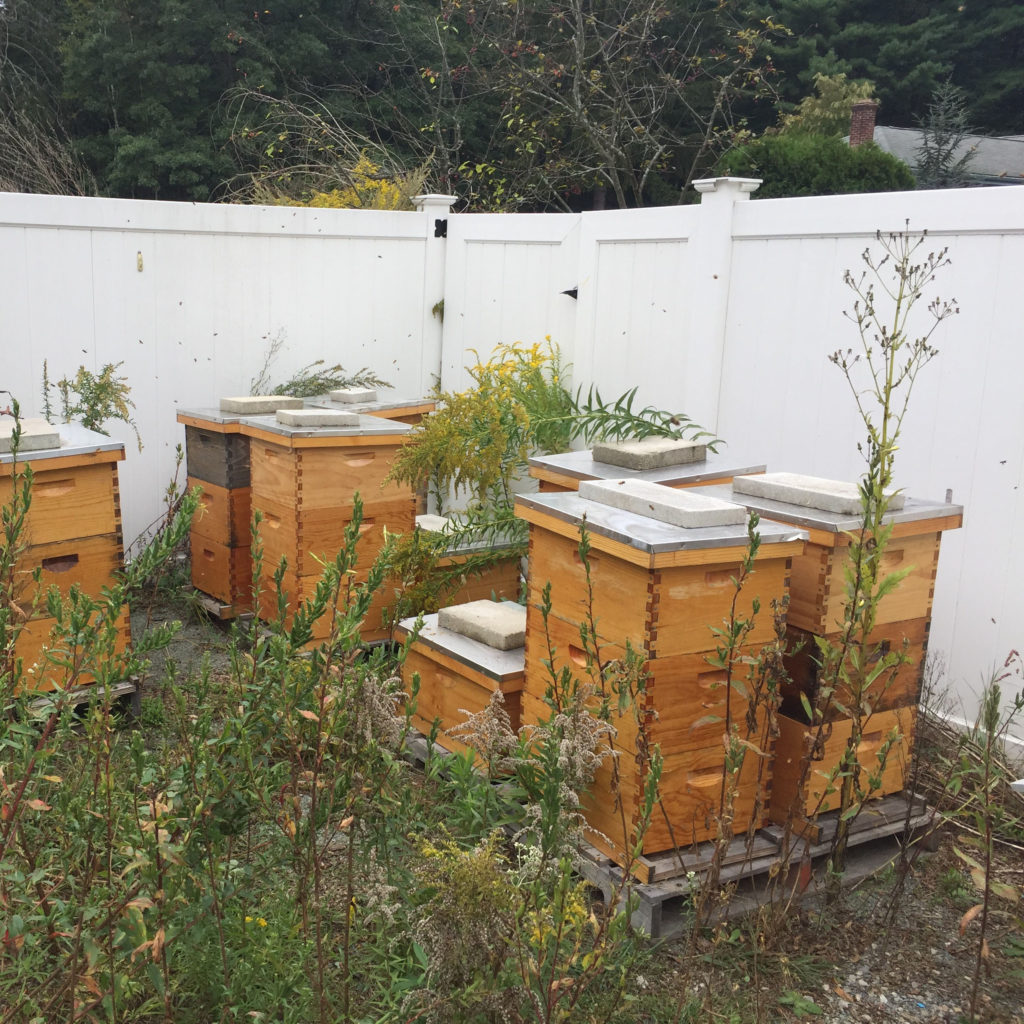
Tip #1: Choose Long-Blooming Plants with a Range of Bloom Times
The best plants for pollinators show off their colors from early spring until late fall, providing pollinators and bees with forage longer than their short-blooming counterparts. Some of our favorites are astilbes, bleeding hearts, sunflowers, and native coneflowers. According to the U.S. Forest Service, you should plant them in groups so bees will have no trouble finding them. Be sure to select a range of native and regionally adapted plants with bloom times that overlap throughout the growing season to ensure pollinators will always have forage options and variety.
Avoid plants with “double flowers” — flowers that have been bred to have a lot more petals than average — because these often produce no nectar. Bees in the fall are trying to stock up their food stores for the winter, so while the flashy, frilly double flowers are visually beautiful, they are not a good choice for gardeners hoping to support pollinators!
Also, make sure you add some night-blooming varieties, such as moonflowers, for bats and moths — they take over the night shift for pollination. These nocturnal pollinators love night-blooming plants that are heavily fragrant and provide copious amounts of nectar; some examples include morning glory, yucca, gardenia, and evening primrose.
Some native bat species eat fruit and nectar, and through nectar foraging, help with pollination. The pollination of plants by bats is called chiropterophily. Incorporating night-blooming plants will make your autumn garden a universal pollinator oasis.
Tip #2: Get the Most Bang for Your Buck
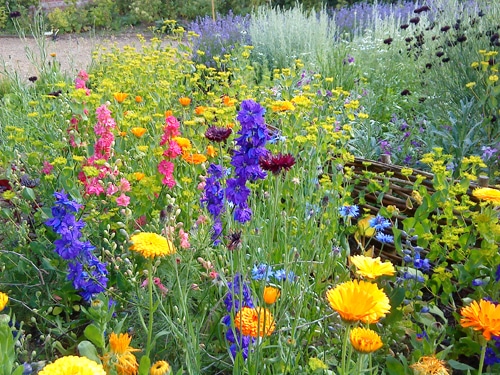
Some plants are better pollinators than others. Choose types that grow well in your area, and you’ll get maximum return on your investment. At the same time, remember to add varieties that provide year-round beauty like hydrangeas, ninebarks, and pagoda dogwood. Zinnias are a great option, as they are laden with nectar and thrive across the vast majority of the growth zones — they also bloom late into the fall. You may also want to plant perennials, such as black-eyed susans, in your autumn garden, as these plants will come back year after year. Some particularly tough varieties include: shasta daisies, daylilies, daffodils, and catmint.
Flowering trees are also a great option to plant in your autumn garden if you have the room; people often forget that bees and other pollinators forage from trees! Our HoneyDNA analysis of Boston beehives show linden trees to be very popular with the bees.
Three other common trees that have been shown to be great pollinators are elm trees, maple trees, and oak trees. Elm trees are one of the earliest trees to bud, usually in February. Planting elm trees provides an early spring insurance policy for your bees during the time right after winter when they are waking up, but it’s too early for all the spring flowers.
Maple trees bloom, and their flowers are attractive to bees as good sources of nectar and pollen. Oak trees support pollinators throughout the year by providing safe and dependable habitat spaces, as well as some of the first available forage in the spring. All four of these trees, linden, elm, maple, and oak, fare best when planted in the fall.
Tip #3: Cool It With the Chemicals
Bees are sensitive to insecticides and most commercial pesticides, so minimize your use of these products or avoid them altogether. Fungicides once were considered low risk for pollinators, but recently they have been shown to contribute to poor health and nutrition for bees. They can also increase the toxicity of insecticides to bees, indirectly contributing to the poisoning of our pollinator friends. Herbicides, while aimed at weeds and not insects, can pose a risk to pollinator health by reducing nectar or pollen sources, resulting in poor nutrition and weakened immunity to diseases. Additionally, herbicides can more directly negatively impact bees by harming their larval development and behavioral learning.
You may want to consider alternatives like soapy water, or spice-based organic products incorporating pest-repellent essential oils. You’ll find lots of eco-friendly pest control ideas on gardening websites or by asking other gardeners. Another great way to move away from pesticides and herbicides is incorporating Integrated Pest Management (IPM) principles.
According to the University of California Agriculture and Natural Resources, “IPM is an ecosystem-based strategy that focuses on long-term prevention of pests or their damage through a combination of techniques such as biological control, habitat manipulation, modification of cultural practices, and use of resistant varieties. Pesticides are used only after monitoring indicates they are needed according to established guidelines, and treatments are made with the goal of removing only the target organism. Pest control materials are selected and applied in a manner that minimizes risks to human health, beneficial and non-target organisms, and the environment.”
Tip #4: Don’t Weed Your Garden
Don’t be so quick to weed your autumn garden. Some weeds, like clovers and dandelions, are a great food source for bees. Many wildflowers are classified as weeds but can be great for pollinators as well. If you must weed your garden, try to let your weeds bloom first so the bees can benefit.
Additionally, if you leave dry, dead stems and leaves from flowers and grasses in your garden (or trim them and move them to a less-conspicuous location), they can provide shelter for native pollinators, such as mason bees and leaf-cutter bees. If you do choose to trim them, make sure the stems are closed on one end and at least six inches long. It’s best to leave the stems in areas that get morning sunshine — this helps the bees warm up when they emerge in the spring. You can also build your own official ‘bee hotel’; check out this article “5 Ways To Increase Nesting Habitat For Native Bees” by the Xerces Society.
If you’re particularly partial to mason bees, our blog post “Everything You Need To Know About Mason Bees: Types, Species And 10 Amazing Facts” has a section on building your own mason bee house. There are multiple ways to make a good mason bee house, ranging from simply filling a coffee can with hollow reeds or drilling holes in a thick wood plank, to constructing a multi-tier mini house.
However you choose to build your bee hotel, it would be a fun project for a rainy fall day! Just make sure to not use cedar or redwood, as these woods are naturally insect-resistant and may discourage mason bees from setting up residence.
Tip #5: Mulch in Moderation
Mulch can prevent bumblebee queens and other native bees from finding a safe place to hibernate, according to National Geographic — Approximately 70% of native bees nest in the ground; they dig nest tunnels in areas of bare ground or between plants. To help out these ground-nesting pollinators, you can leave some areas of earth bare during fall and winter; it’s like putting out a welcome sign for our insect allies.
Alternatively, if you must mulch, choose a type that will break down easily, such as composted leaves. Also, try to use mulch only where it’s really needed. A two-inch ring of mulch around each plant will prevent new, short roots from dying out, and also keep water from running away from the plant if you have to hand-water.
You could also try ‘living mulch‘, which is simply planting low-growing, ground-cover plants that spread out in between the taller plants in your autumn garden. They protect the soil from drying out, suppress weeds, and reduce erosion — all the functions of mulch, but much more supportive of native pollinators.
Tip #6: Discover the Joys of Milkweed
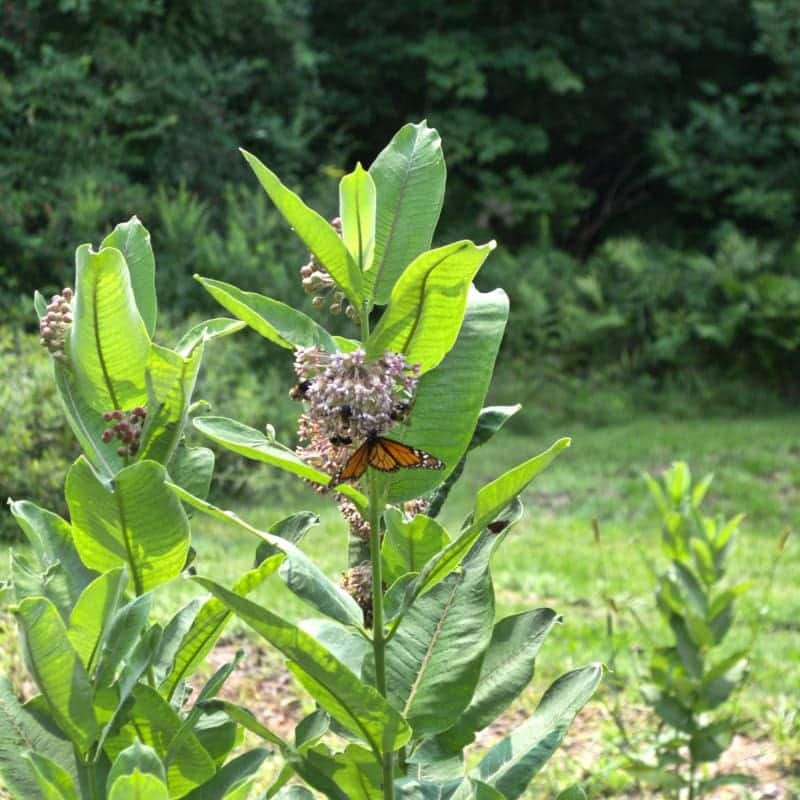
If you’re looking for a simple way to help pollinating insects, one that requires almost no gardening knowledge or expertise, then plant milkweed. This gorgeous wildflower is hardy, beautiful, and beneficial to the environment. There are many different species of milkweed; look for ones that are locally native and for which regionally-sourced seeds and plants are available. Several milkweed species occur across nearly all regions of the continental United States, except western Washington, northwestern Oregon, Alaska and Hawaii.
Planting this flower supports the iconic orange-and-black monarch butterfly, as it is the exclusive source of nutrients for the monarch caterpillars. Its colorful flowers provide abundant nectar and pollen for bees and other pollinators; fall is the best time to plant milkweed, making it the perfect addition to your pollinator-friendly autumn garden!
Tip #7: Plant Pollinator-Friendly Plants for Spring and Summer Now
“Fall is the best time to get perennial plants in the ground so they have time over winter to develop robust root systems that help them survive through the dry summer months. Shrubs and trees do best when planted in fall — at this point in the year they are going dormant, so transplanting is less of a shock to their natural growth. The same can be said of most grasses and flowers. If you’re looking to grow from seed, October-November is the time to sow. Many native plant seeds need cold stratification to germinate, which simply means that they need cold, wet conditions before they start growing.” — The Sierra Club
Fall is the best time for planting fall bulbs that will turn into colorful spring flowers. The hottest days of summer have come to an end, and the cooler weather provides the cold stratification needed to germinate (as mentioned above by the Sierra Club). Plus, the milder temperatures make for a more pleasant and enjoyable experience when working outside in the garden.
Other Ways to Help Bees
Maybe gardening isn’t your thing. There are still many ways you can help save the bees. Here are some great ideas that take no weeding or mulching on your part:
- Buy honey from local beekeepers. These people are a vital part of the honeybee support network; they’re also small business people who could use your support. Additionally, local honey has its own health benefits — consuming local honey can help to alleviate allergy symptoms in the spring! The scientific jury is still out on whether or not consuming local honey can make a person less sensitive to the pollen in their area, but honey has been shown to help soothe irritation in our throats that causes us to cough. It also has antioxidants that can help your body to fight off viruses. To learn more about the health benefits of honey, check out our blog post: “Health Benefits of Honey and Beeswax“.
- Spread the word by enlisting schools, civic clubs, faith communities, and other local entities in the fight to help pollinators thrive in your community.
- Scatter a few seeds. It’s that simple. Buy a pack of wildflower seeds and toss them around your yard, in a field, or at a local park (with permission, of course). Ask your county agent or garden center what types of bee-friendly plants grow well in your area.
- Live and let live. Myths aside, the truth is that most bees are not interested in stinging humans, so stop and think before swatting one. You can prevent most human-bee encounters by keeping sugary drinks and desserts covered at picnics and when roaming through the woods.
Read our article “17 Ways to Save the Bees” for more!
Planting a pollinator-friendly autumn garden is a perfect way to bring a little beauty into the world while helping pollinating creatures do their jobs. The small amount of effort you’ll expend will help foster a sweeter world for everyone.


